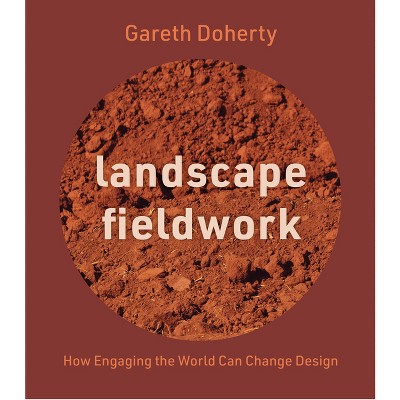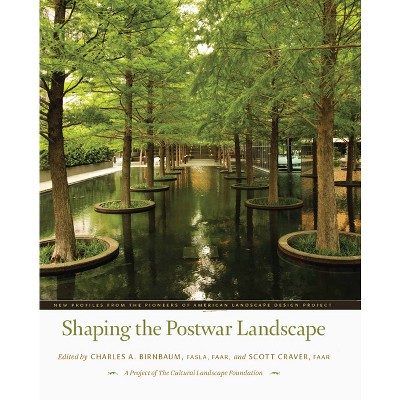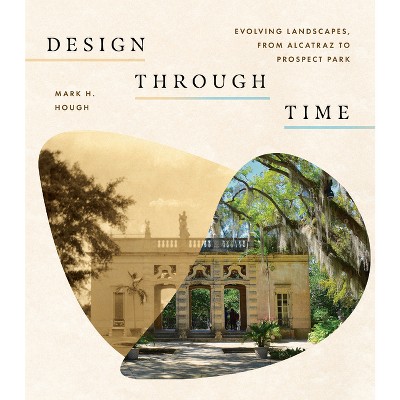The Working Man's Green Space - by Micheline Nilsen & Brooks M Barnes (Hardcover)

About this item
Highlights
- With antecedents dating back to the Middle Ages, the community garden is more popular than ever as a means of procuring the freshest food possible and instilling community cohesion.
- About the Author: Micheline Nilsen is Associate Professor of Art History at Indiana University South Bend.
- 248 Pages
- Architecture, Landscape
Description
About the Book
Nilsen shows how community gardening is inscribed within a social contract that differs from country to country, but how there is an underlying aesthetic and social significance to these gardens that transcends national borders.Book Synopsis
With antecedents dating back to the Middle Ages, the community garden is more popular than ever as a means of procuring the freshest food possible and instilling community cohesion. But as Micheline Nilsen shows, the small-garden movement, which gained impetus in the nineteenth century as rural workers crowded into industrial cities, was for a long time primarily a repository of ideas concerning social reform, hygienic improvement, and class mobility. Complementing efforts by worker cooperatives, unions, and social legislation, the provision of small garden plots offered some relief from bleak urban living conditions. Urban planners often thought of such gardens as a way to insert "lungs" into a city.
Standing at the intersection of a number of disciplines--including landscape studies, horticulture, and urban history-- The Working Man's Green Space focuses on the development of allotment gardens in European countries in the nearly half-century between the Franco-Prussian War and World War I, when the French Third Republic, the German Empire, and the late Victorian era in England saw the development of unprecedented measures to improve the lot of the "laboring classes." Nilsen shows how community gardening is inscribed within a social contract that differs from country to country, but how there is also an underlying aesthetic and social significance to these gardens that transcends national borders.
Review Quotes
Nilsen draws on a body of evidence...with emphasis placed on legal documents, parliamentary reports, and association bylaws, rather than horticultural manuals and periodicals. This selection results in a narrative that is somewhat drier than Willes's survey, but significant for the precise regulatory history it provides.
Nilsen's study is substantial, and her study of English allotment gardens will appeal to Victorianists with interest in design, the history of land use, and working-class culture.
--Lynn Voskul "Victorian Studies vol. 59 no. 1"The Working Man's Greene Space gives a concise overview of the history of allotments in England, Germany, and France in the late nineteenth and early twentieth centuries.
--Tobias Becker "German Historical Institute London Bulletin "The Working Man's Green Space is outstanding in its comparison of allotment garden issues in England, France, and Germany between 1870 and 1919. Nilsen also looks at the utilitarian and aesthetic dimensions of allotment gardening and thus adds valuable facets to the complex history of allotment gardening in Europe.
--Gert Gröning, author of Landscape Gardens in the Eighteenth and Nineteenth Centuries: Examples of British-German Cultural TransferA much-needed addition to the literature on urban garden programs. This is a unique and substantial contribution and will undoubtedly become the go-to book on the history of allotments. It will prove invaluable to the fast-growing field of urban gardening and agriculture.
--Laura Lawson, Rutgers University, author of City Bountiful: A Century of Community Gardening in AmericaNilsen's well-researched and ambitious cross-cultural perspective provides insight into the origins of the urban garden movement and into the social and political value of the allotment garden that is both deeply connected to but also transcends time and place.
--Marie Warsh "Buildings and Landscapes"About the Author
Micheline Nilsen is Associate Professor of Art History at Indiana University South Bend. She is the author of Railways and Western European Capitals: Studies of Implantation in London, Paris, Berlin, and Brussels.
Shipping details
Return details
Trending Art, Photography & Design Books











